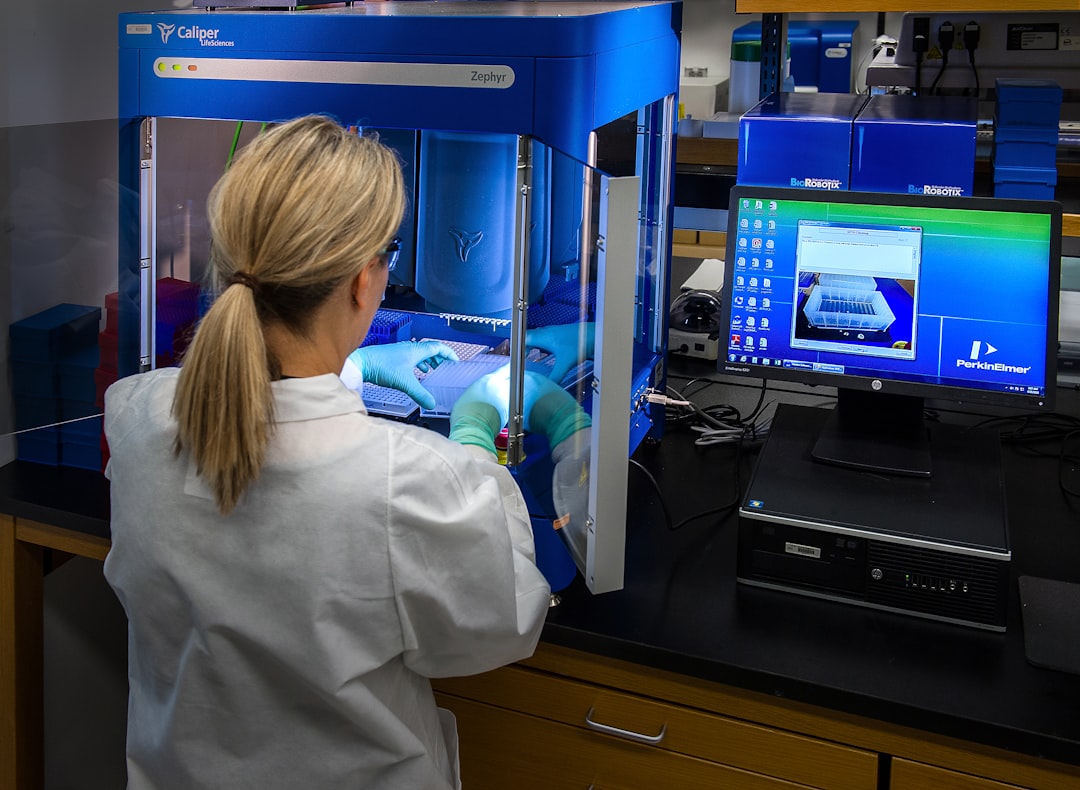Comments
- No comments found

The evolution in the healthcare industry is driven by technological advancements revolutionizing how care is delivered, managed, and experienced.
From electronic health records (EHRs) to telemedicine platforms and artificial intelligence (AI) applications, technology solutions are reshaping every aspect of healthcare delivery, administration, and patient engagement. This comprehensive guide explores how healthcare professionals can harness technology to enhance efficiency, improve patient outcomes, and streamline workflows.

Electronic Health Records (EHRs) have become the cornerstone of modern healthcare delivery, replacing traditional paper-based medical records with digital systems enabling comprehensive, real-time patient information access. The reputable cloud-based solution providers behind AlayaCare recommend the adoption of these solutions for healthcare organizations seeking to improve efficiency, enhance patient care, and optimize outcomes. Here's how healthcare professionals can leverage EHR technology to streamline workflows and improve patient care:
Centralized Patient Data: EHRs consolidate patient health information, including medical history, lab results, medications, and treatment plans, into a single, easily accessible electronic record. This allows healthcare providers to access and review pertinent information quickly, leading to more informed decision-making and coordinated care.
Improved Communication and Collaboration: EHRs facilitate seamless communication and collaboration among healthcare providers, enabling secure sharing of patient data and electronic referrals. This fosters interdisciplinary collaboration and ensures that all care team members are informed and aligned in their approach to patient care.
Efficient Documentation and Billing: EHRs streamline documentation processes by automating charting, coding, and billing tasks, reducing the administrative burden on healthcare providers. This allows clinicians to spend more time on direct patient care and less on paperwork, ultimately improving efficiency and productivity.
Telemedicine platforms allow healthcare providers to conduct virtual consultations with patients via secure video conferencing. Remote monitoring solutions enable continuous monitoring of patient vital signs, biometric data, and symptoms from the comfort of the patient's home. Telemedicine platforms can also be used for healthcare education and training, enabling remote delivery of lectures, workshops, and continuing medical education (CME) courses to healthcare professionals. This facilitates lifelong learning and professional development opportunities, regardless of geographical location.
Telemedicine platforms facilitate virtual care coordination and multidisciplinary consultations among healthcare providers, enabling collaborative decision-making and coordinated care delivery across specialties and care settings. This ensures that patients receive comprehensive, integrated care tailored to their needs.
Artificial intelligence (AI)-powered clinical decision support systems analyze patient data, medical literature, and evidence-based guidelines. This helps clinicians make informed decisions, reduce diagnostic errors, and improve patient safety. Predictive analytics algorithms analyze historical patient data. This enables proactive interventions, personalized treatment plans, and targeted preventive care strategies to improve patient health outcomes and reduce healthcare costs.
Data analytics can also be used to optimize healthcare operations and resource allocation by identifying inefficiencies, bottlenecks, and areas for improvement within healthcare delivery systems. This includes optimizing patient flow, bed management, staffing levels, and supply chain management to enhance operational efficiency and patient satisfaction.
In addition to improving clinical care delivery and operational efficiency, technology solutions can enhance patient engagement and experience by providing tools and platforms for interactive communication, education, and self-management. Patient portals integrated with EHR systems enable patients to access their medical records, lab results, appointment scheduling, and secure messaging with healthcare providers from any device with internet access. This empowers patients to manage their health actively and enhances communication between patients and their care teams.
Telehealth platforms can be used to deliver health education, preventive care services, and outreach programs to underserved populations, including rural communities, minority groups, and individuals with limited access to traditional healthcare services. This helps bridge gaps in care and improve health outcomes for vulnerable populations.
While technology solutions offer tremendous potential to transform healthcare delivery and improve patient outcomes, their implementation, and adoption can pose challenges for healthcare organizations and providers. Here are some critical considerations for overcoming challenges and ensuring the successful integration of technology solutions into clinical practice:
Training and Education: Provide comprehensive training and education programs to healthcare providers, staff, and patients to ensure they can use technology solutions effectively and maximize their benefits. Invest in ongoing training and support to inform users of updates, best practices, and new features.
Interoperability and Integration: Promote interoperability and seamless integration between different technology systems, including EHRs, telemedicine platforms, and third-party applications, to ensure the seamless exchange of data and information across care settings and providers. Invest in interoperable solutions that support open standards and facilitate data exchange between disparate systems.
User Experience and Design: Prioritize user experience and design considerations when selecting and implementing technology solutions to ensure they are intuitive, user-friendly, and accessible to all stakeholders, including patients with diverse needs and abilities. Solicit user feedback and incorporate their input into the design and development process to optimize usability and satisfaction.

Technology solutions are transforming healthcare delivery, administration, and patient engagement, offering unprecedented opportunities to enhance efficiency, improve outcomes, and empower patients. By embracing electronic health records (EHRs), leveraging telemedicine and remote monitoring solutions, harnessing the power of artificial intelligence and data analytics, and enhancing patient engagement and experience, healthcare professionals can revolutionize how care is delivered and experienced.
Leave your comments
Post comment as a guest